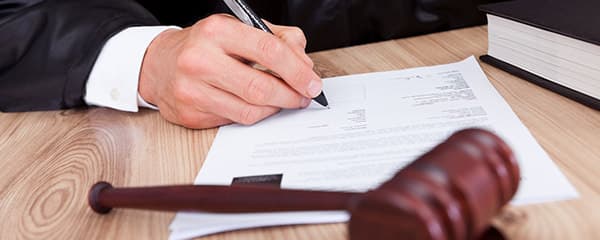Using a “Wearable Witness” in Your Next Case
Wearable devices have come a long way from the 13th century’s invention of eyeglasses. The first wearable computer was created in 1960, launched by the notable brand Casio which marketed the first calculator wristwatch. Fast forward to today, where wearable devices can now gather extensive data, specifically about our bodily systems, including exercise, food consumption, weight, sleep, noise exposure, heart rate, skin temperature, and respirations. It is more than just our location using GPS. What’s more, this data is compiled and exchanged with little to no user involvement—in many instances, users are not even aware this information is being tracked. Do you now have a potential new witness to “interview” in your litigated claims? Yes, you do.
Discoverability of Wearable Device Data
Much of the conversation to date on wearable technology in the civil litigation context has pertained to Fitbit data. For example, in Bartis v. Biomet, Inc., the plaintiff brought products liability claims against the manufacturer of an artificial hip implant, claiming to have suffered substantial injuries, including pain and limited mobility. No. 4:13-CV-00657-JAR, 2021 WL 2092785, at *1 (E.D. Mo. May 24, 2021). In response to interrogatories, the plaintiff admitted that he consistently wore a Fitbit, which tracked his sleep, heart rate, and steps. Id. The defendants then requested the production of the plaintiff’s Fitbit and other wearable device data. Id. Instead of turning over the data, the plaintiff lodged a series of objections. The court found the Fitbit data relevant to the plaintiff’s alleged injuries. Id. It further rejected the plaintiff’s complaints regarding the data being unreliable, as that “argument clearly goes to admissibility and weight, not discoverability.” Id., at *3 (citing Fed. R. Civ. P. 26(b)(1)).
Enter the Apple Watch. Recent surveys estimate that more than 100 million people actively use an Apple Watch. Apple Watches are repositories of information stored within the Cloud and on users’ multiple devices. With nearly every WatchOS update and iteration of the Apple Watch comes new features. The Series 4 model, for example, included an FDA-cleared electrocardiogram, thus rendering it a Class II medical device capable of alerting its user to abnormal heart rhythms. That same model was equipped with an accelerometer and gyroscope hardware, enabling the device to detect users’ hard falls by analyzing wrist trajectory and impact. Recently, the FDA cleared a technology that allows Parkinson’s patients to be monitored via their Apple Watches. See Stephen Nellis, Rune Labs Gets FDA Clearance to Use Apple Watch to Track Parkinson’s Symptoms, REUTERS (June 13, 2022).
This information has obvious relevance in personal injury and other civil litigation. There is very little precedent because the technology is relatively new, and litigation is lagging behind it. It appears that in the last decade, attorneys have spent more energy writing about the discovery of wearable technology data than actually pursuing it.
Under the familiar discovery standard, a civil litigant may obtain information regarding “any nonprivileged matter that is relevant to any party’s claim or defense and proportional to the needs of the case.” Fed. R. Civ. P. 26(b)(1). Wearable technology data clearly fits the bill—it is relevant by the same reasoning that a plaintiff’s medical records and other health information would be. And it is certainly “reasonably accessible.” Fed. R. Civ. P. 26(b)(2)(B) (providing that with respect to electronic discovery in particular, “[a] party need not provide discovery of electronically stored information from sources that the party identifies as not reasonably accessible because of undue burden or cost”). It is readily available to users right on their phones.
Further, in addition to seeking wearable technology data as part of a defense strategy, litigants may also find themselves defending against data offered by a plaintiff. As technology advances and data becomes more reliable in the eyes of certain courts, plaintiffs’ counsel may be emboldened to point to wearable data as proof of injury extent or severity. While it is not currently the norm, counsel could soon face the prospect of arguing in favor of discovery of wearable data in one case while defending against its discovery in another.
Admitting Wearable Device Data at Trial
Once at trial, a party asking for admission of Apple Watch (or other wearable device) information must demonstrate the touchstone requirements of relevance, authenticity, and reliability. Relevance should be fairly straightforward. Data on activity levels may strengthen or weaken the facts establishing injury. Because some wearables can even measure emotional states or stress levels, the potential exists to have this data admitted for claims of emotional and psychological injury as well.
Authenticity may be established in several ways, with Federal Rule of Evidence 901 giving a non-exhaustive list of examples. As part of the authenticity analysis, the proponent must also show the data is reliable. Wearable devices sometimes erroneously track steps, for example, while a user travels by car. The proponent of this evidence must show that its data collection methods are sound by presenting evidence from the manufacturer on error rates or possibly collecting information on subsequent remedial measures taken to correct earlier malfunctions in the devices.
Even if the raw data itself cannot be admitted, the proponent may still get its broad strokes admitted through the testimony of an expert witness, who need not rely on admissible evidence in preparing a report or testifying at trial. A sure-fire way of getting information about a wearable device before the jury may indeed be to have the expert rely on it as the basis for an expert opinion. Depending on the case, an expert witness could also rely on such data to establish that the plaintiff did not suffer from an alleged condition and discredit causation based on the physical metrics shown from the data (i.e., a plaintiff claiming a particular injury would not exhibit the physical data demonstrated from such metrics).
What is certain is that wearable technology and its data will continue to present litigants with opportunities and conundrums. Today’s counsel must remain vigilant in identifying when such data may be relevant, authentic, and reliable and how the public’s increasing adoption of such technology will shape judicial opinion and claims outcomes. In short, beware of the wearable witness.
Authored by Chad R. Hutchinson, Attorney, Butler Snow
The views expressed in this article are those of the author and are provided for general informational and educational purposes only. This article and the views expressed do not: (1) constitute legal or other professional advice; (2) purport to provide a statement of the current applicable law; or (3) represent the views or opinions of the author’s employer(s) or of W.R. Berkley Company (“Berkley”) or any of its affiliated companies. Berkley provides no representation or warranties as to the contents of this article. Inclusion of this document on www.berkleyls.com in no way implies or warrants that the contents would be applicable to any litigation or circumstance involving any Berkley companies or customers. Any discussion of insurance is descriptive only. Coverage afforded under any insurance policy issued is subject to the individual terms and conditions of that policy. Not all companies are licensed in all jurisdictions. Please refer to the Legal, Licensing and Privacy Information available on this website. The contents of this article are the property of Berkley Life Sciences, a Berkley Company.
© 2023 by Berkley Life Sciences, a Berkley Company. All rights reserved.



